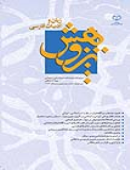نقد کهن الگویی غزلي از مولانا
محورهای موضوعی : پژوهشهای ادبیات کلاسیک ایران
1 - دانشگاه الزهرا
کلید واژه: نقد کهن الگویی کهن الگو غزلیات شمس ولادت مجدد پیرخردمند,
چکیده مقاله :
نقد آرکی تایپی از نظریههای مدرن در نقد ادبی و مبتنی بر نقد روانشناختی است و بر اساس آراي روانشناس معروف سوئیسی کارل گوستاو یونگ بنا شده است. دراین نوع نقد به مطالعه و بررسی کهن الگوهای اثر ميپردازند و نشان ميدهند که چگونه ذهن شاعر و نویسنده، این آرکی تایپها را که محصول تجربههای مکرر بشر است و در ناخودآگاهی جمعی وی به ودیعه گذاشته شده جذب کرده، و آنها را به شیوهای سمبولیک نمایش داده است. هدف این مقاله هم بررسی یکی از غزلهای مولوی از منظر نقد کهن الگویی است. نگارنده تلاش ميکند تا ضمن توضیح مختصری درباره این نوع نقد نشان دهد که جان آگاه مولانا با ژرف بینی و کنکاش در حقایق هستی توانسته است صورتهای مثالی نخستین را دریابد و آنها را در غزلهای خود به صورت ناخودآگاه به کار ببرد. مضمون کهن الگویی حاکم بر فضای غزل مورد بحث با مطلع: مرده بدم زنده شدم، گریه بدم خنده شدم دولت عشق آمد و من، دولت پاینده شدم آرکی تایپ مرگ و ولادت مجدد است. در بحث از نظریه مرگ و ولادت مجدد به داستانهای قرآن و کتاب مقدس اشاره ميشود. از نظریونگ ولادت مجدد یکی از بنیادیترین اعتقادهای بشری است که ناشی از این همانی بین بشر و چرخه طبیعت است. در این غزل جز نظریه ولادت مجدد، کهن الگوی پیر خردمند، قهرمان و موقعیتهای کهن الگویی سفر، طلب و تشرف نیز دیده ميشود.
Archetypal criticism is one of the modern theories in literary criticism and based on psychological criticism; mainly founded on the theories of the famous Swedish psychologist; Carl Gustav Yung. This type of criticism surveys and studies the archetypes used in a work, showing how the poet or writer’s mind has absorbed these archetypes, which are actually the outcome of mankind’s repetitive experiences and left behind in the collective unconsciousness of humankind, finally showing them symbolically. The purpose of this essay is to survey one of Rumi’s sonnets through archetypal criticism. The writer makes an attempt to explain this criticism in brief first, then show how Rumi’s conscious spirit has succeeded to ponder and penetrate deeply into the truths of universe and understand the imagery instances; using them unconsciously in his own sonnets. The archetypal content dominant in the atmosphere of this sonnet, starting with: Morde Bodam Zende shodam, Gerye Bodam, Khande shodam Dolat e Eshgh Amad o man, dolat e Payande shodam is the archetype of death and rebirth. When the theory of death and rebirth is discussed, there are allusions to Bible and the Holy Quran. According to Yung, rebirth is one of the most fundamental beliefs derived from coordination between mankind and the nature’s cycle. In this sonnet, in addition to the theory of rebirth, the archetypes of wise old, hero, and other archetypal instances such as yearning and divine journey are also seen.


